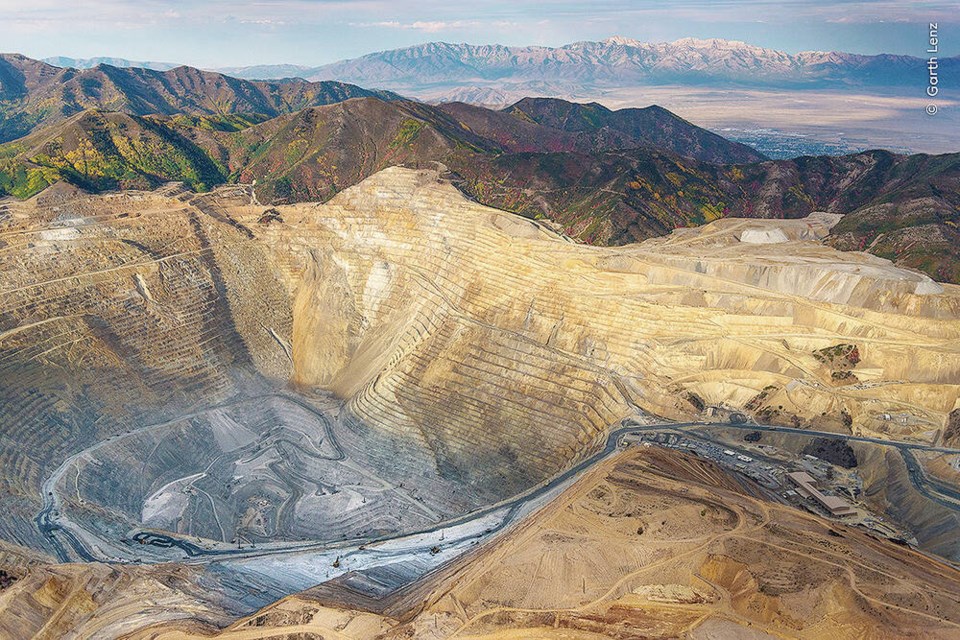WILDLIFE PHOTOGRAPHER OF THE YEAR
Where: Royal B.C. Museum, 675 Belleville St.
When: March 1-June 2
Admission: Included with regular museum admission ($18 adults; $11 seniors/students/youth; children five and under free)
MIKE DEVLIN
Times Colonist
When the Royal B.C. Museum opens its new exhibit on Friday, it will be an illuminating experience for thousands of museumgoers — in more ways than one.
Wildlife Photographer of the Year will occupy the majority of the museum’s third floor until June 2, giving thousands of guests the opportunity to view the work of top photographers in an entirely new light. The travelling annual exhibit, developed and produced by the Natural History Museum in London, England, gets special treatment when it arrives at the Victoria institution, which takes the unusual step of presenting the 100 selected images backlit using lightbox technology.
“It brings the photographs to life,” said Tracey Drake, CEO of the Royal BC Museum. “It provides an opportunity to really illustrate the power of the photography. I’ve seen [the exhibit] in other organizations, and it feels flat. This is incredible, and because of the impact of these images and the stories they tell — climate change, environmental conservation — the backlighting helps them leap off the wall.”
The museum made a bigger investment in the exhibit this year by purchasing the lightboxes it rented during previous years. Drake said the museum is committed to staging the exhibit “for many years to come,” which made the purchase a shrewd one heading into its 10th instalment of Wildlife Photographer of the Year.
“The reason why a lot of the other organizations that take this exhibit do not do it in this way is because of the cost,” she said. “You acquire the exhibition, but if you want everything that goes with the technology, it’s extra to rent [the lightboxes] and extra to ship them. So it’s a commitment. But we’ve always bought into that because we felt it was a better experience for the museumgoer.”
The exhibition meets at the intersection of photography, science and art. The photos, culled from more than 45,000 international entries each year, represent some of the best of the world, which puts pressure on the institutions selected to host the exclusive exhibit. As such, the images on display are printed overseas, on a transparent, synthetic material known as Duratrans for quality purposes.
When backlit with a light source, the imagery is illuminated with staggering clarity, according to Victoria’s Garth Lenz, who is among the participating photographers this year.
When presented in this manner, the work of Lenz, Mark Williams of Jordan River (who has two photos in the exhibit), and the remaining photographers seems digitally manipulated. But nothing could be further from the truth, according to Lenz.
“You have to send the judges your original file, because they are looking for a number of things. For instance, if you did a lot of the things you’re not supposed to do — such as goose the image in Photoshop, or crop something out — they can tell that immediately.”
Lenz has been involved with the exhibit twice previously, and never takes the opportunity for granted. To have his work showcased alongside “the best of the best” is a wonderful opportunity for the local landscape photographer, whose work has appeared in numerous newspapers and magazines, including Time, The New York Times, Esquire, and The Guardian.
Wildlife Photographer of the Year gives him the chance to learn about new photographers and reconnect with established ones. “If you’ve been doing this for a while, and making the rounds from time to time, as I have, you end up knowing lots of people,” he said. “I probably know 10 or 15 of the photographers.”
Mark Williams of Jordan River has two photos in the exhibit, featuring an Arctic fox in one photo and beluga whales in the other (Williams, whose photos were taken in Nunavut, was said to be in Antarctica this week and was not available for comment.)
Lenz’s photo — an aerial shot of the Bingham Canyon Copper Mine near Salt Lake City, Utah — features no animals, which is acceptable per the contest’s rules. The photos in the exhibit need only showcase the diversity of the natural world, wildlife or otherwise. His image of the largest open excavation on Earth certainly qualifies.
The photo is one of the last to capture the mine it its former state; two landslides, which occurred months after the image was shot, cratered a massive section of the mine, resulting in the largest non-volcanic slide in North America’s modern history.
The environmental impact of such a site, which poses a significant health risk to wildlife and human populations in the area, pushed Lenz’s image into the category of photojournalism, which is one of the foundations of the exhibit.
“Some of the photography is quite jarring because it’s telling the story of where we are as a society,” Drake said. “But if you understand the language that comes with the photographs, and the language behind the image itself, these are really important stories to tell. It helps you understand the issues of climate change and global warming.” [email protected]



-thumb.png;w=120;h=80;mode=crop)